Marjoram Substitutes
Similar in flavor to oregano, marjoram can sometimes be challenging to find, especially in the United States. But not to worry! If you don’t have any, these 12 marjoram substitutes have got you covered.
Includes options that are suitable for vegan, vegetarian, gluten free, low carb, Keto, and Paleo diets.
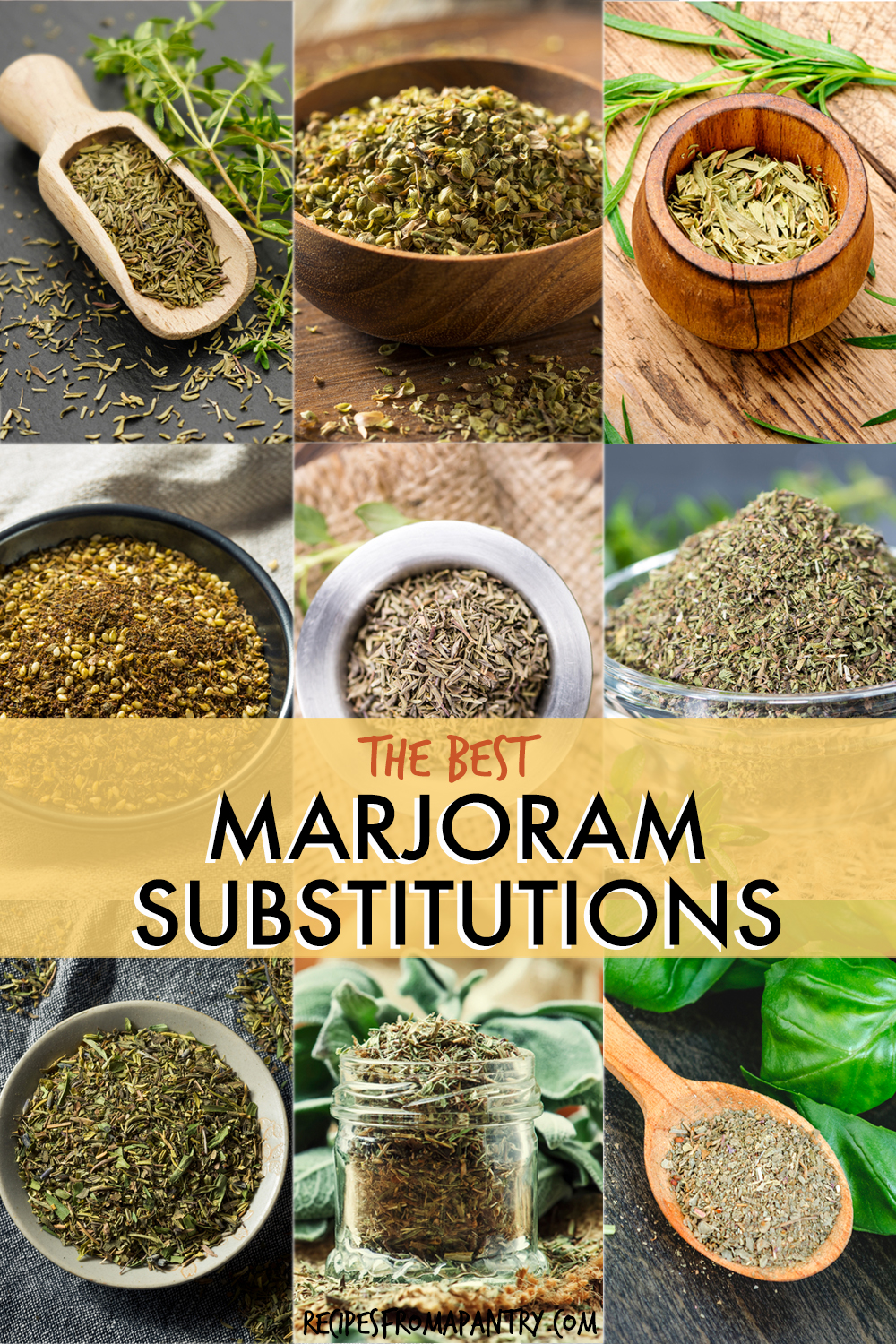
If you need an excellent marjoram substitute, you will love these 12 substitutes for marjoram. Most of these substitutes are readily available in your pantry or at your local grocery store.
If you don’t have marjoram on hand or simply want to experiment with new flavors, I’ve compiled this list of the best substitutes for marjoram. Yeap, I’ve done the research so you don’t have to!
And if you’re looking for more substitution tips and tricks, you’ll want to check out my collection of Thyme Substitutes and this Cumin Substitute list.
Plus, don’t miss these super helpful Worcestershire Sauce Substitutions as well as these Soy Sauce Substitute ideas. #kitchenswapsforthewin
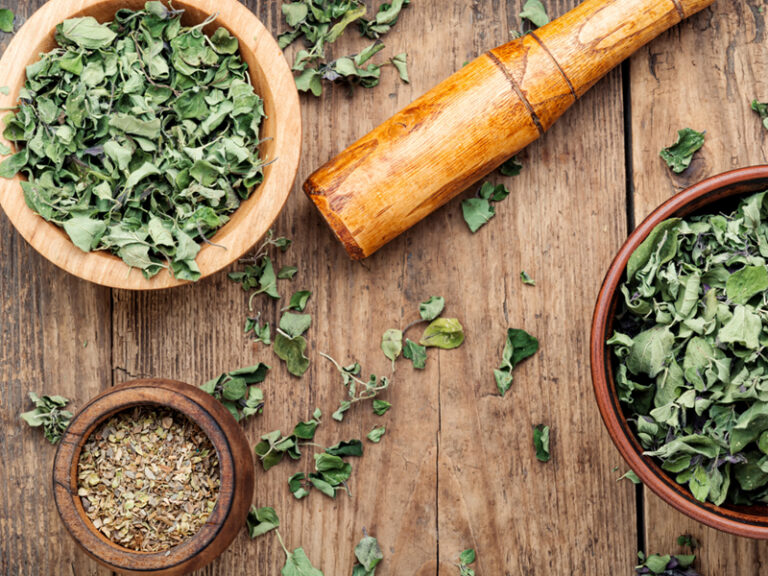
What Is Marjoram?
Marjoram is a perennial herb in the mint family with a similar flavor to oregano. This cold-hardy herb is prevalent throughout Europe but hasn’t been used as widely throughout the US, although it is becoming more popular.
While marjoram isn’t as readily available in the United States, European recipes that often contain marjoram as an ingredient are growing in popularity. If you have a recipe that calls for marjoram, you can select one of the best marjoram substitutes listed below.
Ps if you make your own, then store your substitute in these awesome spice jars.
What Is Marjoram Used For?
With its sweet pine and citrus notes, marjoram is often used to season soups, stews, sauces, and dressings and is usually found in herbal teas. Marjoram is used in many Mediterranean and European dishes and can be used fresh or dried.
In addition to its culinary uses, marjoram has long been used as a medicinal herb. The herb is antibacterial, antifungal, and antimicrobial. It’s been used for headaches, earaches, coughs, and colds. It may also have benefits for those with cancer, arthritis, or depression.
Now that you know a little more about this flavorful and versatile herb, read on to learn what the best swaps are for those times when marjoram isn’t accessible.
Handy Tip: Use Good Kitchen Tools!
For the best tools to help make your recipe even easier and more successful, check out my collection of the Best Kitchen Tools on Amazon.
12 Substitutes for Marjoram
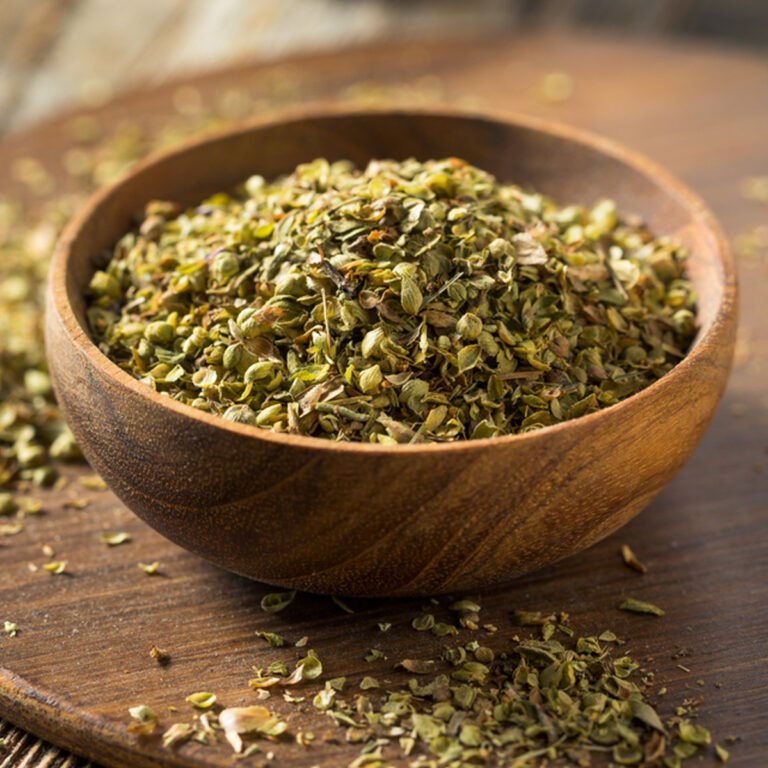
1. Oregano
Similar in appearance and flavor, dried or fresh oregano is the standard marjoram substitute when marjoram isn’t available. The two herbs are closely related and can easily be swapped in most cooking applications.
Since most people keep oregano in their spice cabinet, this is a simple and easy substitute. Oregano has a stronger flavor, so you will want to use less than the recipe’s amount. Start with half and add more to taste if needed.
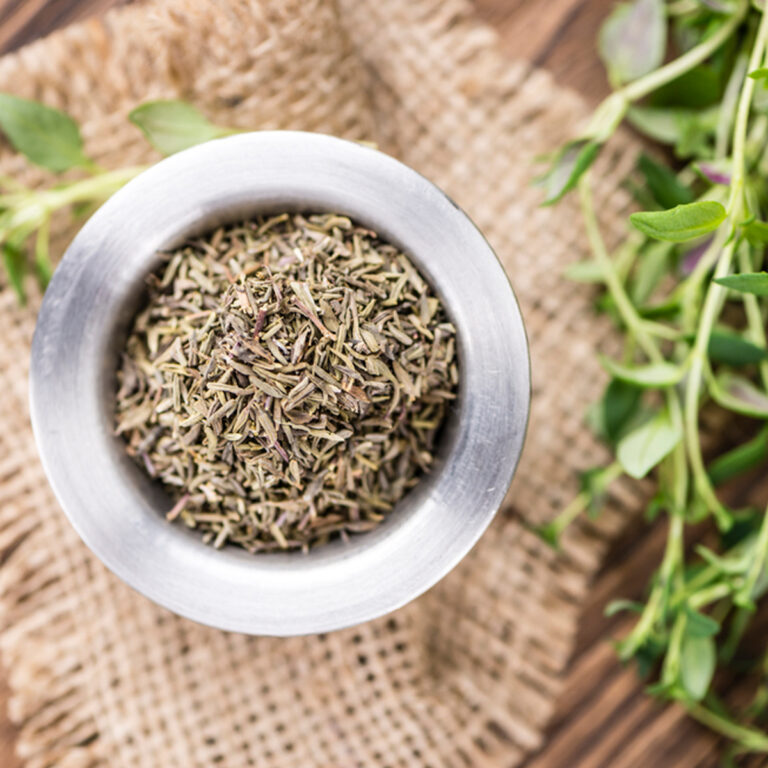
2. Thyme
Another herb in the mint family that is closely related to marjoram, thyme is herby and floral, slightly sweet, a little peppery, and has a hint of mint.
Common thyme can be substituted 1:1 for marjoram, and the flavor change will hardly be noticeable. After tasting, you may decide to add just a bit more since thyme is so mild.
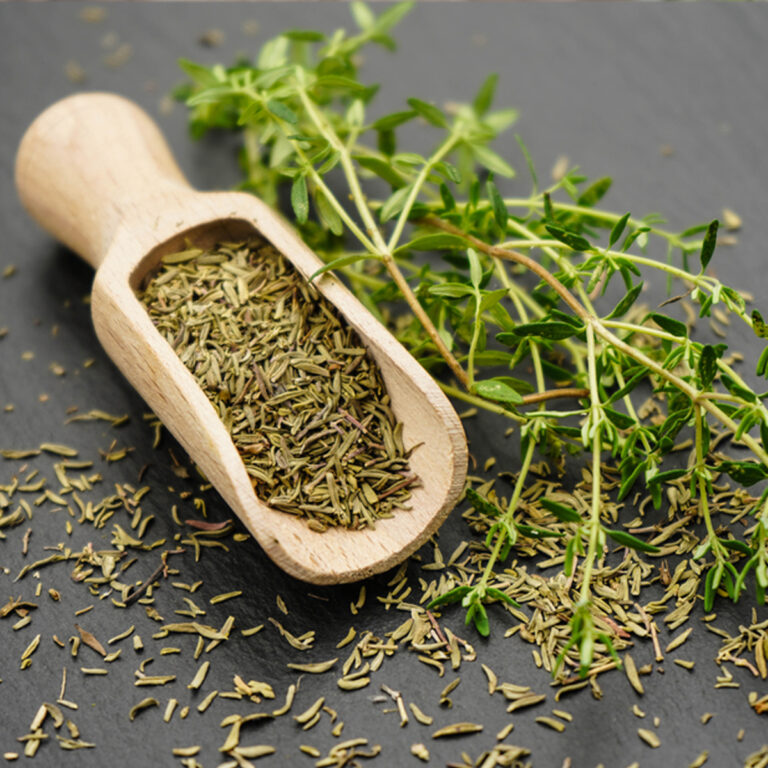
3. Lemon Thyme
Lemon Thyme is a variety of thyme with a much brighter, lemony flavor. It is somewhat stronger than common thyme, so choose your use carefully. Lemon thyme is perfect for fish, chicken, and vegetable dishes that would benefit from a lemony taste.
When using lemon time as a marjoram substitute, use slightly less than the amount of marjoram and adjust to taste.
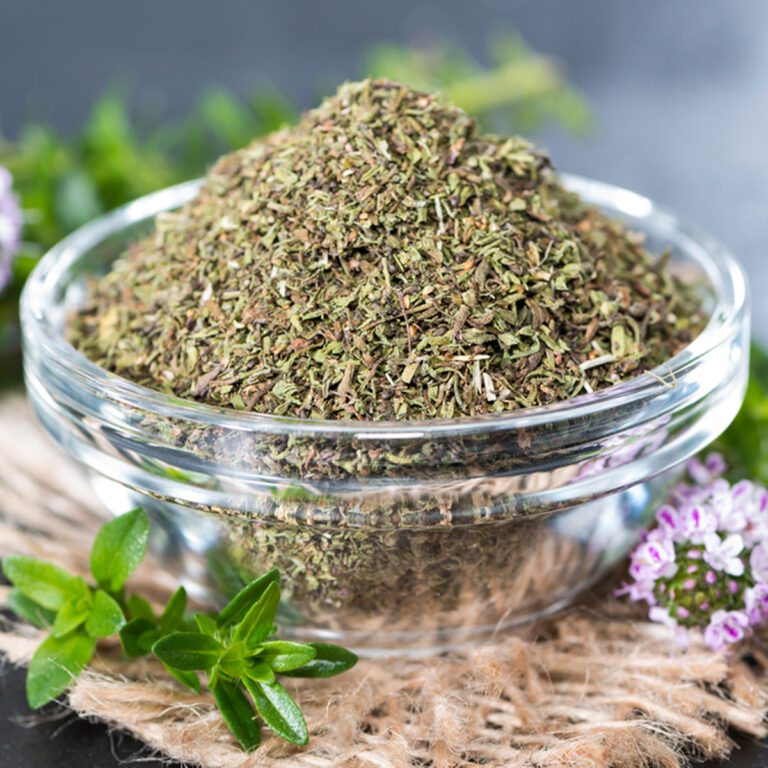
4. Savory
Savory is also often referred to as summer savory. There is also a winter version, but it is often difficult to find. Summer savory is peppery with flavor notes similar to marjoram and thyme.
Savory is a common culinary herb throughout Europe and a classic marjoram substitute.
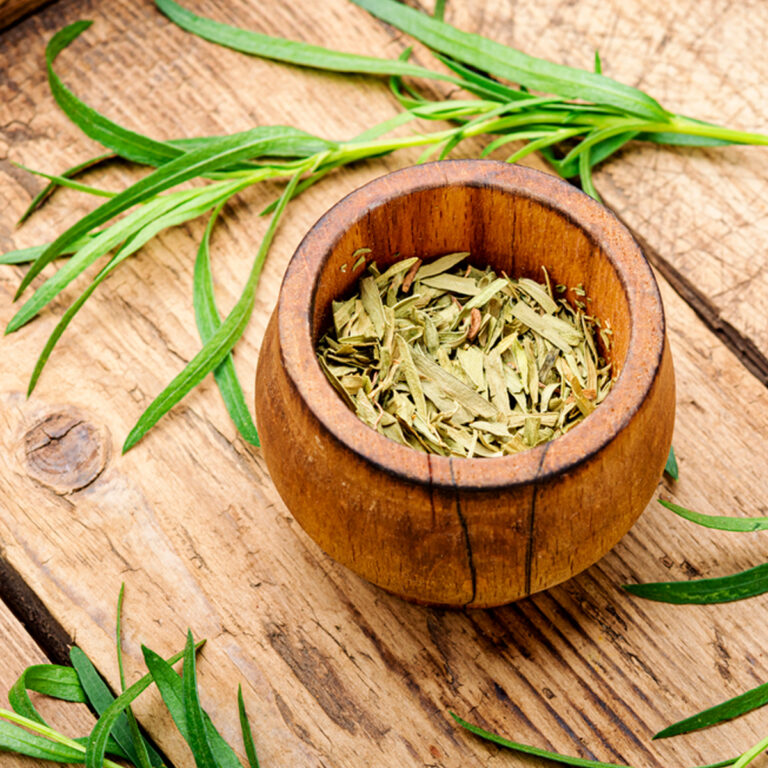
5. Tarragon
Tarragon has a licorice flavor that works well with roasted vegetables and potatoes. It has a bright springtime flavor that may work well in place of marjoram in many dishes.
Use tarragon selectively and be sure to use less tarragon than you would marjoram, as the flavor is quite strong and intense.
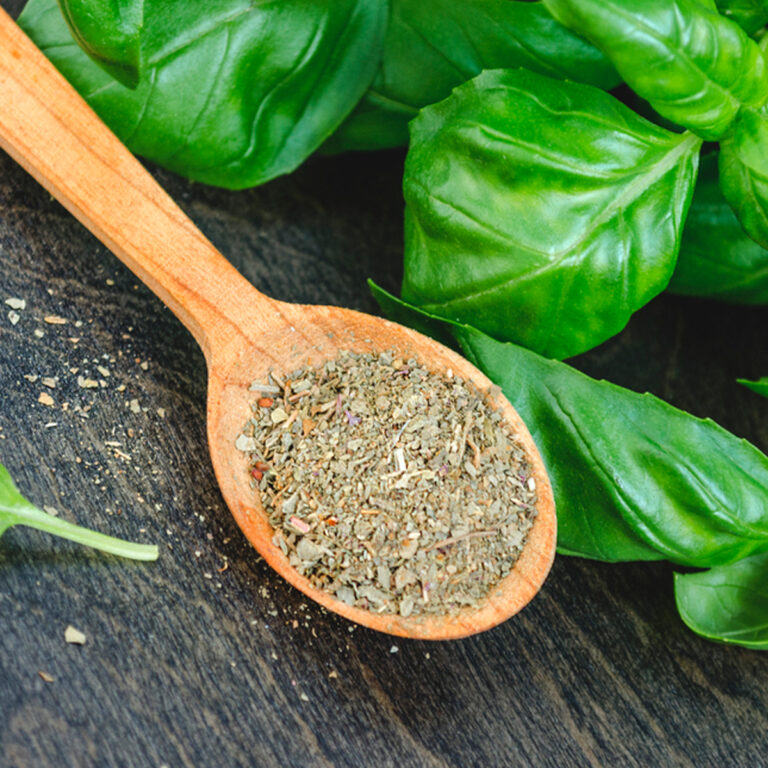
6. Basil
Like tarragon, fresh or dried basil is robust in flavor with a bright herby, almost licorice flavor. Basil is an excellent substitute for Italian or Mediterranean dishes, especially tomato-based dishes or with green vegetables.
Basil is bright and pungent, so use it sparingly and check for flavor before adding more to the dish.
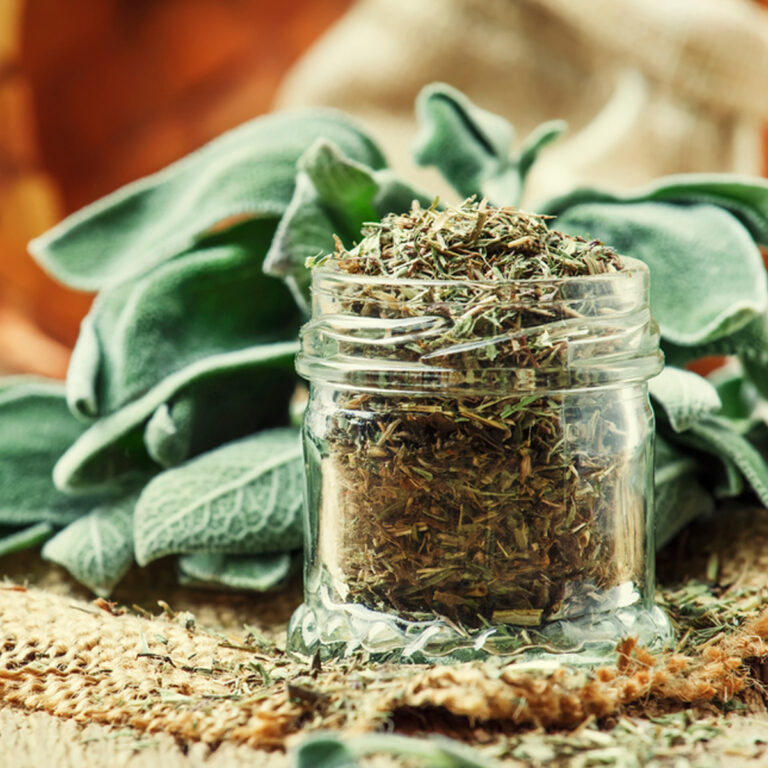
Recommended Tools
- Store your substitute in these awesome spice jars.
- If you need to then use this spice grinder to grind up your ingredients.
- For the best tools to help make your recipe even easier and more successful, check out my collection of the Best Kitchen Tools on Amazon.
7. Sage
Sage is often used with pork and turkey and is a common herb used during the holidays. If you have fresh or dried sage on hand, it has some of the same citrusy, earthy flavors found in marjoram.
Sage is considerably stronger than marjoram, so begin with about half the amount of marjoram called for in the recipe. Taste and add more as needed.
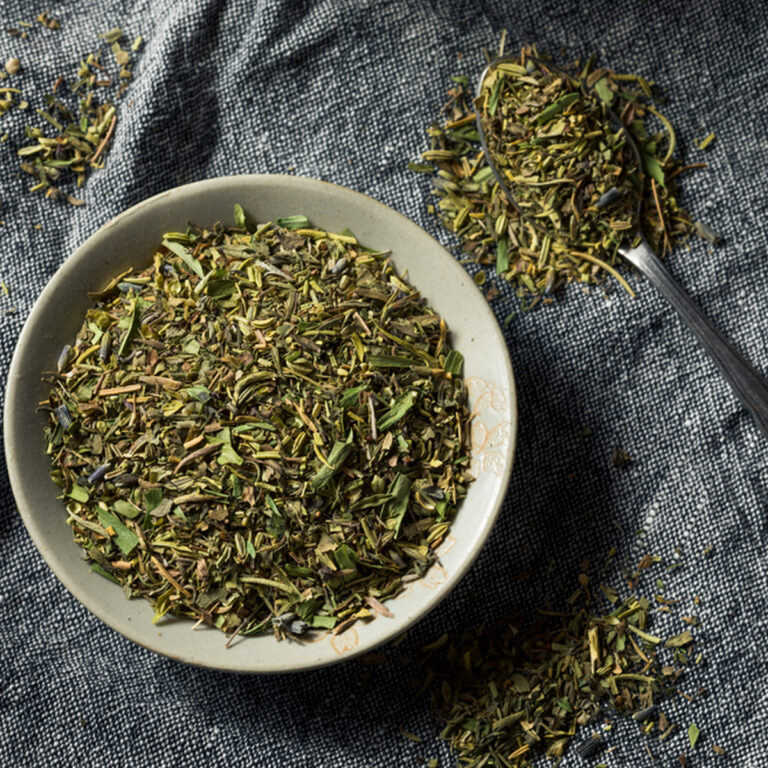
8. Herbes de Provence
French Herbes de Provence is a dry mixture of herbs that often contains marjoram and fennel, along with parsley, rosemary, tarragon, thyme, lavender, and more.
While this blend may not make a great substitute for Italian dishes, it’s ideal for French recipes.
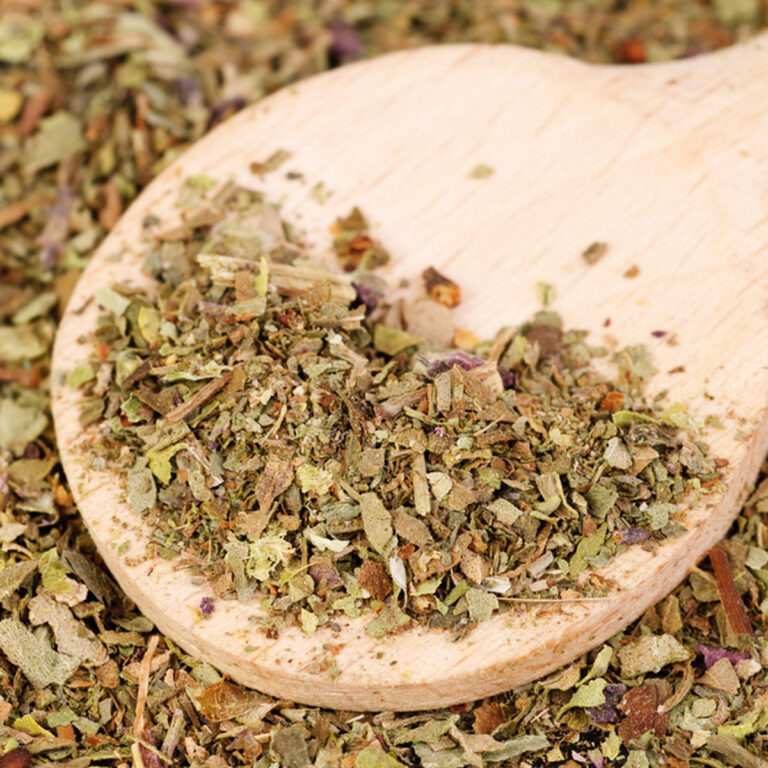
9. Pizza Seasoning
Pizza seasoning is another blend of spices that you can likely use as a substitute for marjoram. This mixture usually contains a blend of oregano or marjoram, basil, dried onion, garlic powder, thyme, fennel, paprika, and ground black pepper.
If your blend contains a lot of oregano or marjoram, it will make a fine substitute, especially in tomato-based dishes.
Ingredients are usually listed in order of quantity so look for pizza seasoning that has marjoram or oregano listed as one of the first several ingredients.
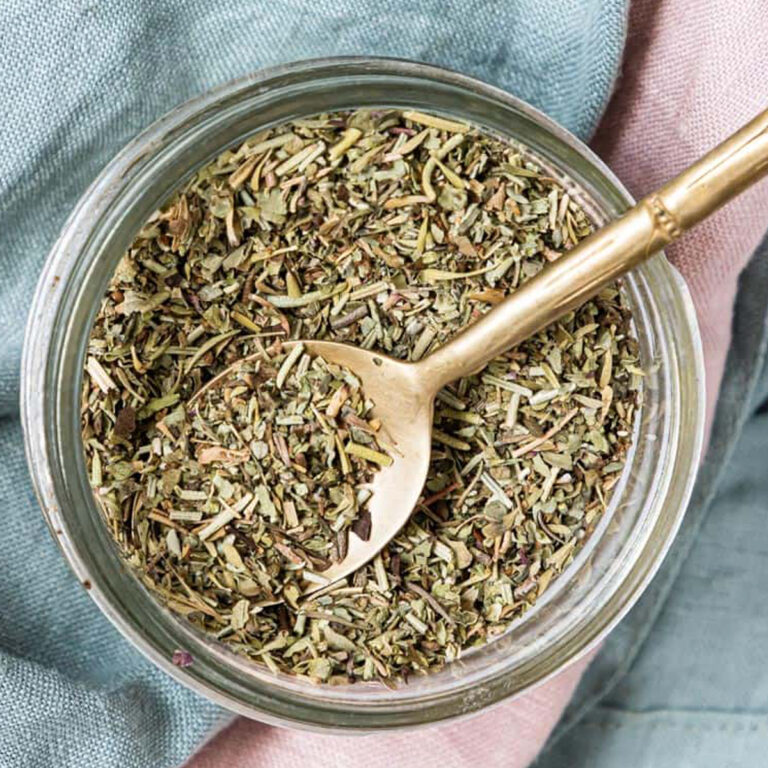
10. Italian Seasoning
Like pizza seasoning, Italian seasoning often includes marjoram or oregano as a main ingredient. My Italian Seasoning Recipe does not include the onion and garlic found in pizza seasoning, so it is a bit more herby in flavor.
Italian seasoning is a great choice for meat dishes and sauces, especially tomato-based sauces.
Again, you will want to use about half the amount of marjoram, taste, and then adjust as needed.
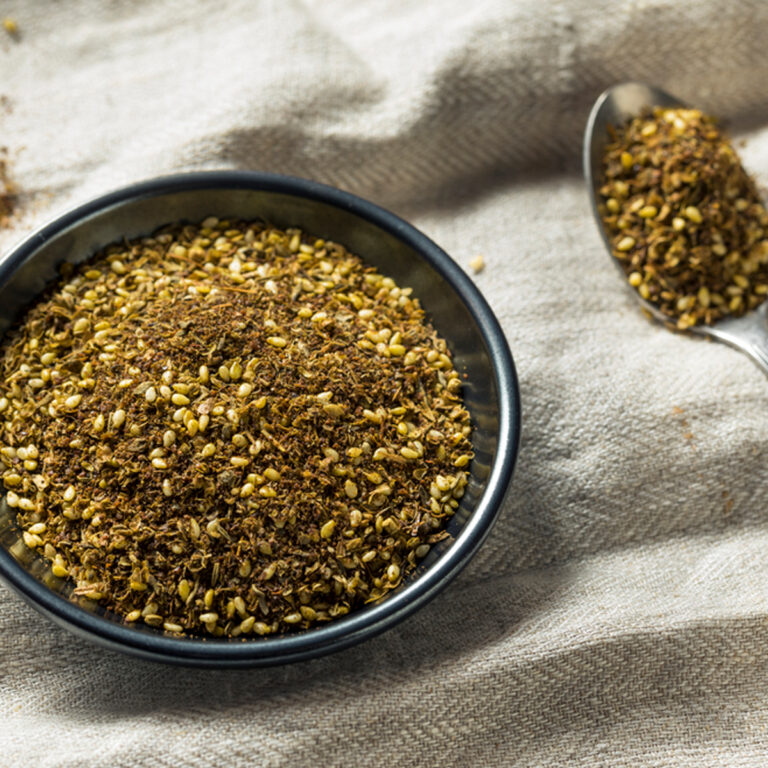
11. Za’atar
Za’atar is a seasoning blend that is commonly used in Middle Eastern cooking. The blend contains a mixture of marjoram, thyme, and oregano but also includes sumac and toasted sesame seeds which give it a nutty flavor.
The unique flavor works well with roasted vegetables, salad dressings, and sauces that will be used with vegetables.
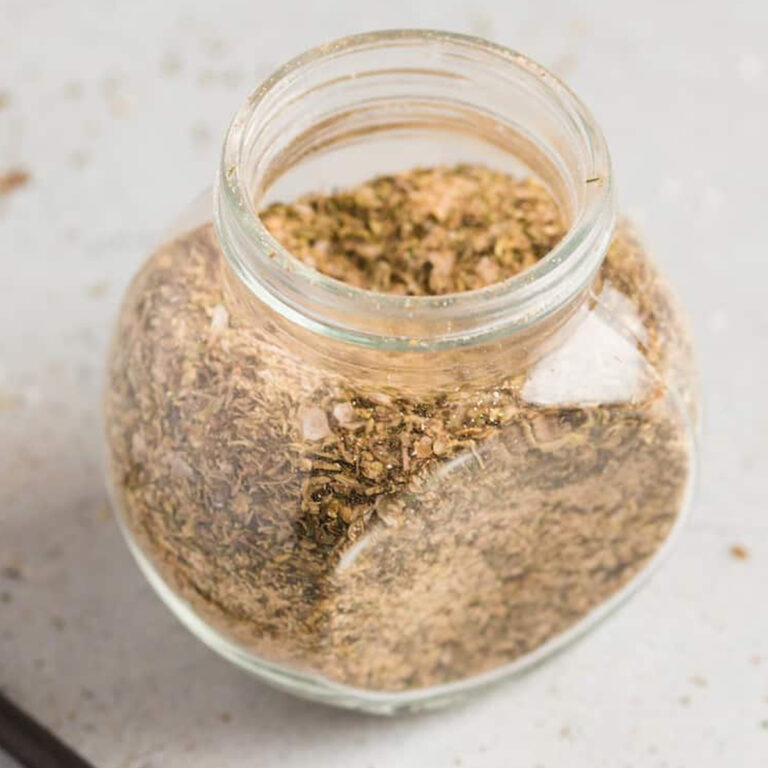
12. Greek Seasoning
Greek seasoning is a warm blend of herbs and spices that will add loads of flavor to Mediterranan dishes.
A great replacement for marjoram in salad dressings and on meat and fish, Greek seasoning does contain salt and pepper, so make adjustments to the other ingredients in your recipe accordingly.
My easy recipe for homemade Greek Seasoning contains marjoram, thyme, and basil along with a bit of onion and garlic and a hint of cinnamon and nutmeg for warmth.
FAQs
Whether you use fresh marjoram or dried marjoram will likely depend on your recipe and application of the herbs. Whenever possible, substitute fresh marjoram with another fresh herb. When using a dried form, another dried herb will work.
You can usually use either by making a few adjustments to the quantities. One teaspoon of dried marjoram is equivalent to one tablespoon of fresh marjoram.
Dried herbs are usually stronger in flavor by quantity so always use less when replacing fresh herbs with dried herbs.
Marjoram and Oregano are very closely related. Scientifically, they are different species in the same genus.
Both belong in the mint family, but marjoram is generally sweeter and milder than oregano which can have a slightly peppery flavor.
Oregano is the most common substitute for marjoram. However, there are many herbs and herb blends with similar flavors that will work if marjoram is unavailable.
Serving Suggestions
These marjoram substitutes are ideal for using in any of these delicious recipes;
- Air Fryer Ham.
- Air Fryer Baby Potatoes.
- Instant Pot Turkey Breast with Garlic Butter Gravy.
- Easy Instant Pot Whole Chicken.
More Recipes You May Like
Check out these easy to make spice and seasoning blends;
- Homemade Poultry Seasoning.
- Best Dang Creole Seasoning.
- Easy Tuscan Seasoning Recipe.
- Homemade Fajita Seasoning.
- Best Shawarma Seasoning.
Recommended Tools
- Store your substitute in these awesome spice jars.
- If you need to then use this spice grinder to grind up your ingredients.
- For the best tools to help make your recipe even easier and more successful, check out my collection of the Best Kitchen Tools on Amazon.
Thank you for reading my what is a substitute for marjoram post. And please come visit again as I continue to slice, dice, and dream up affordable Air Fryer recipes, Instant Pot Recipes, Southern Recipes, and more. Thanks for supporting Recipes from a Pantry, food blog.




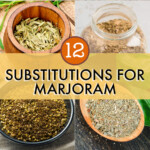



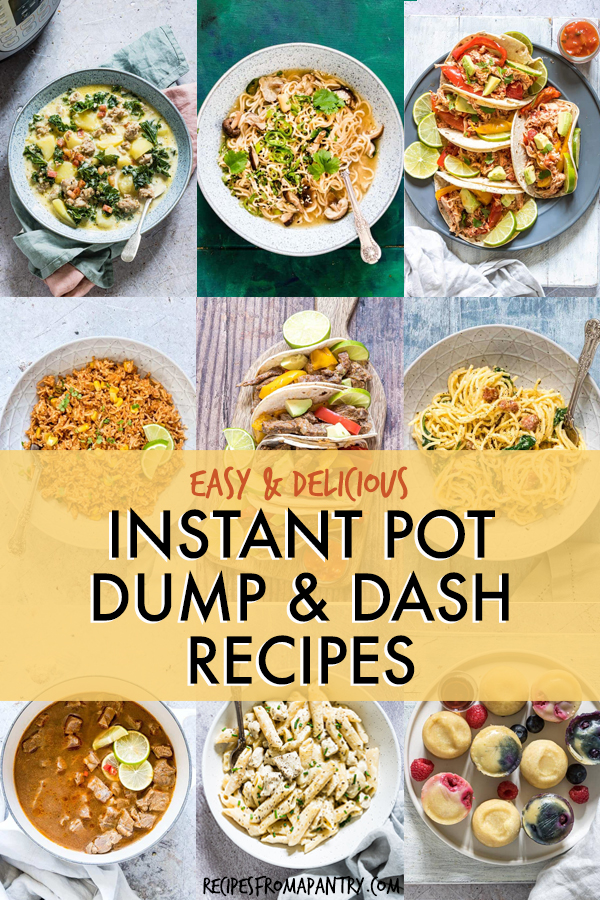
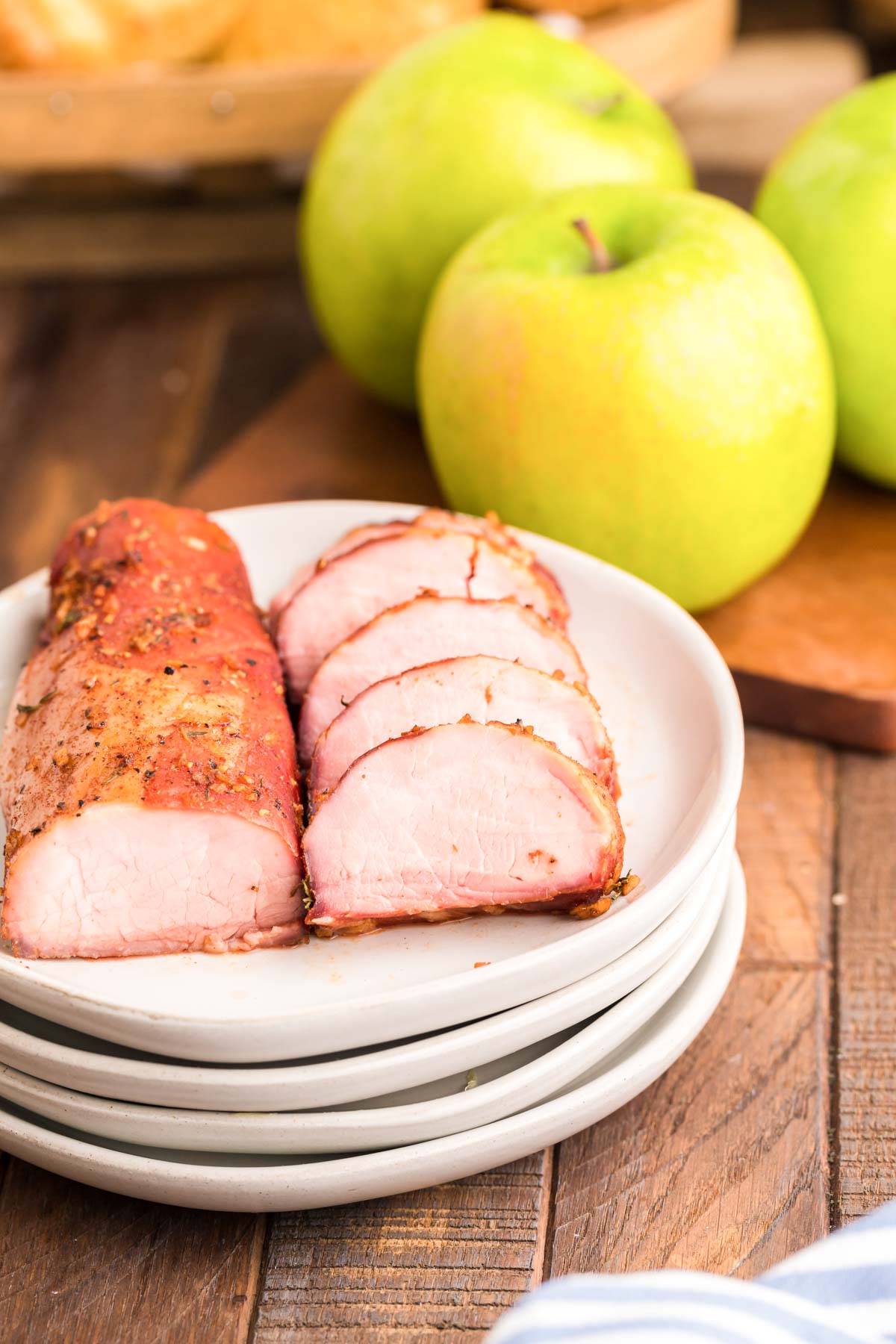
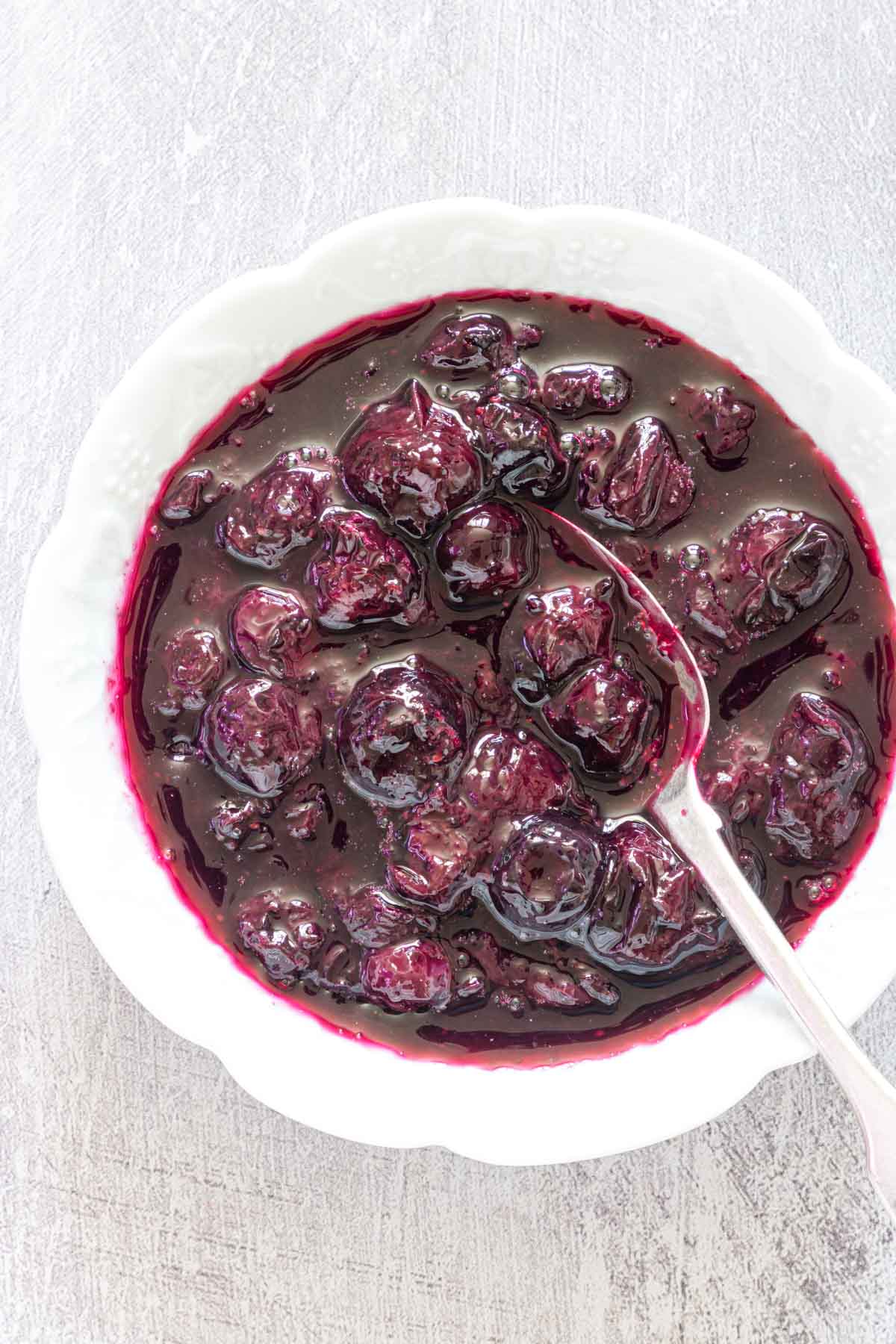
Thank you for the in depth descriptions of the various herbs that can replace marjoram. I use most of these except for savory.
I have read & also been told that dried herbs can be put into foods while they are cooking but fresh herbs should be added at the end of cooking. Does this apply to to all herbs?